 Search by Keyword
|
"CRY BABY CRY"
(John Lennon – Paul McCartney)
"A piece of rubbish!" This was John Lennon's reaction in 1980 when asked about his "White Album" composition "Cry Baby Cry." Why would he react so negatively about this song? Do Beatles fans agree? Do you agree?
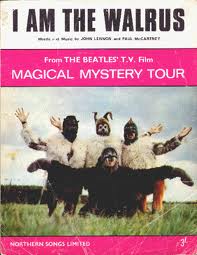 Those who take the time to examine the writing style of John Lennon through the years will easily notice the changes within the context of the time period. For instance, his output in 1967 generally used imagery to paint a picture that didn't necessarily make sense but sounded as if it did, such as with “Lucy In The Sky With Diamonds” and “I Am The Walrus.” By 1968, he put this aside for the most part and dealt much more with real occurrences in his own life and/or his interpretations of real events, such as with “I'm So Tired,” “Sexy Sadie” and “Revolution.” Those who take the time to examine the writing style of John Lennon through the years will easily notice the changes within the context of the time period. For instance, his output in 1967 generally used imagery to paint a picture that didn't necessarily make sense but sounded as if it did, such as with “Lucy In The Sky With Diamonds” and “I Am The Walrus.” By 1968, he put this aside for the most part and dealt much more with real occurrences in his own life and/or his interpretations of real events, such as with “I'm So Tired,” “Sexy Sadie” and “Revolution.”
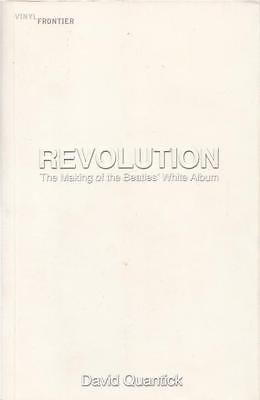 It is within the context of his 1968 output that we experience a “throwback” of sorts with “Cry Baby Cry,” a song which started to take shape the previous year and exuded the obscure but effective lyrics Lennon was known for at that time. Concerning John's negative opinion of the song in 1980, David Quantick, in his book “Revolution: The Making Of The Beatles' White Album,” offers the explanation that he “might have dismissed the song for not being about anything concrete.” This appears to make sense in light of the fact that, when looking back at his career as a songwriter, he would cite autobiographical songs, such as “Help!” and “Strawberry Fields Forever” as his best work. If that was the criteria he used in his later life, songs about imaginary characters involved in nonsensical activities could be seen as useless to him, or “rubbish.” It is within the context of his 1968 output that we experience a “throwback” of sorts with “Cry Baby Cry,” a song which started to take shape the previous year and exuded the obscure but effective lyrics Lennon was known for at that time. Concerning John's negative opinion of the song in 1980, David Quantick, in his book “Revolution: The Making Of The Beatles' White Album,” offers the explanation that he “might have dismissed the song for not being about anything concrete.” This appears to make sense in light of the fact that, when looking back at his career as a songwriter, he would cite autobiographical songs, such as “Help!” and “Strawberry Fields Forever” as his best work. If that was the criteria he used in his later life, songs about imaginary characters involved in nonsensical activities could be seen as useless to him, or “rubbish.”
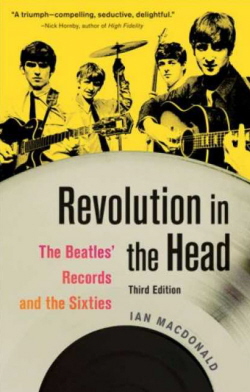 Most Beatles fans and authors would wholeheartedly disagree, however. Ian Mac Donald, in his book "Revolution In The Head," describes "Cry Baby Cry" as “one of the most evocative products of that creative channel.” “An underrated Lennon royalty satire; it's his most accomplished Lewis Carroll pastiche,” writes Tim Riley. “A song with an air of a particularly dreamlike ghost story...one of the strangest and most beautiful lyrics on the 'White Album,'” writes David Quantick. “Alice trips gently through Lennonland for just about the last time...(it ranks) among his most magical,” writes Nicholas Schaffner. Most Beatles fans and authors would wholeheartedly disagree, however. Ian Mac Donald, in his book "Revolution In The Head," describes "Cry Baby Cry" as “one of the most evocative products of that creative channel.” “An underrated Lennon royalty satire; it's his most accomplished Lewis Carroll pastiche,” writes Tim Riley. “A song with an air of a particularly dreamlike ghost story...one of the strangest and most beautiful lyrics on the 'White Album,'” writes David Quantick. “Alice trips gently through Lennonland for just about the last time...(it ranks) among his most magical,” writes Nicholas Schaffner.
Hiding within its burial place in the middle of side four, “Cry Baby Cry” can be, and has been, easily overlooked. If you're familiar with the song, you probably love it. If you haven't unearthed it yet, it's definitely worth your while to discover it. You won't regret it!
Songwriting History
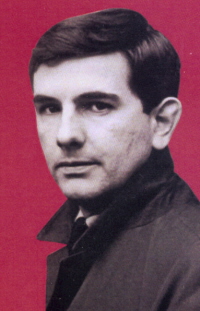 The writing of “Cry Baby Cry” appears to date back to late 1967. In Hunter Davies' authorized biography entitled “The Beatles,” the author details John's songwriting process at the time and interviews him as well. After detailing many of the inspirations that led to the writing of the recently recorded “I Am The Walrus,” Davies includes this interesting paragraph: The writing of “Cry Baby Cry” appears to date back to late 1967. In Hunter Davies' authorized biography entitled “The Beatles,” the author details John's songwriting process at the time and interviews him as well. After detailing many of the inspirations that led to the writing of the recently recorded “I Am The Walrus,” Davies includes this interesting paragraph:
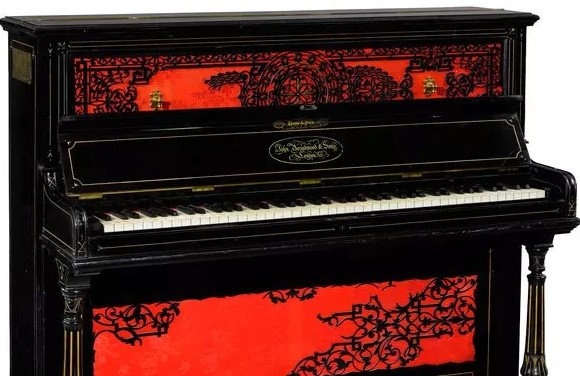 “Most of John's composing is done at the piano, just doodling over it for hours, letting his mind wander, almost in a trance, while his fingers go over bits of tunes. (Lennon:) 'I've got another one here, a few words, I think I got them from an advert: 'Cry baby cry, make your mother buy.' I've been playing it over on the piano. I've let it go now. It'll come back if I really want it. I do get up from the piano as if I have been in a trance. Sometimes I know I've let a few things slip away, which I could have caught if I'd been wanting something.'” “Most of John's composing is done at the piano, just doodling over it for hours, letting his mind wander, almost in a trance, while his fingers go over bits of tunes. (Lennon:) 'I've got another one here, a few words, I think I got them from an advert: 'Cry baby cry, make your mother buy.' I've been playing it over on the piano. I've let it go now. It'll come back if I really want it. I do get up from the piano as if I have been in a trance. Sometimes I know I've let a few things slip away, which I could have caught if I'd been wanting something.'”
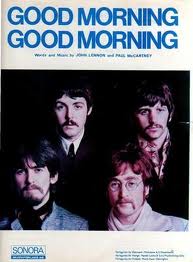 From this quote it shows that at least the initial germ of the chorus of the song had taken shape as of the later part of 1967. This is yet another example of a television commercial influencing his songwriting, “Good Morning Good Morning” being written this same way. “I often sit at the piano, working at songs, with the telly on low in the background,” John related during this time. “If I’m a bit low and not getting much done, then the words on the telly come through.” From this quote it shows that at least the initial germ of the chorus of the song had taken shape as of the later part of 1967. This is yet another example of a television commercial influencing his songwriting, “Good Morning Good Morning” being written this same way. “I often sit at the piano, working at songs, with the telly on low in the background,” John related during this time. “If I’m a bit low and not getting much done, then the words on the telly come through.”
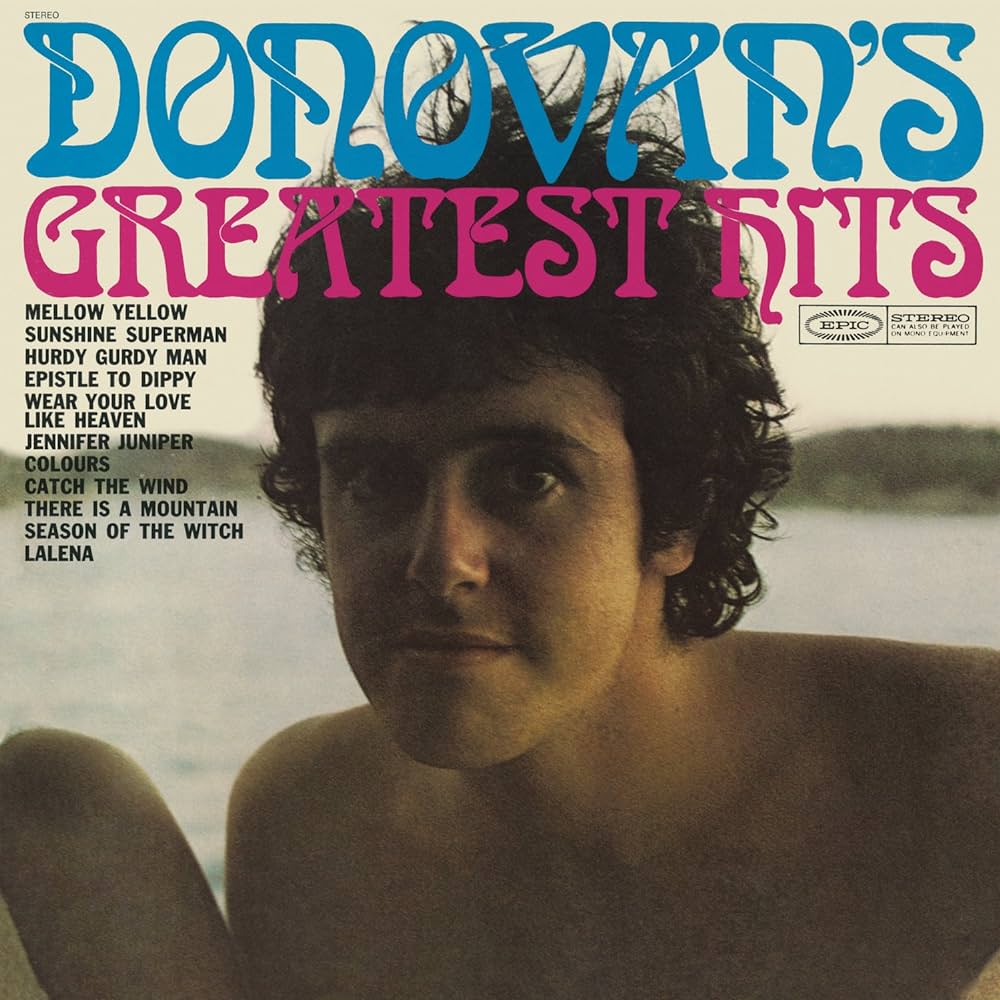 At some point after that, likely during his visit to India with The Beatles in the spring of 1968, John decided to flesh out the verses of “Cry Baby Cry” with a descending chord pattern on guitar while using imagery reminiscent of Lewis Caroll, one of his favorite childhood authors. While direct references from this author found their way into Lennon songs such as “Lucy In The Sky With Diamonds” and “I Am The Walrus,” he decided this time to incorporate a more nursery rhyme feel. “I think the eventual imagery was suggested by my own songs of fairytales,” remembers singer/songwriter Donovan, with whom John associated quite a lot while in India. “We had become very close in exchanging musical vibes.” At some point after that, likely during his visit to India with The Beatles in the spring of 1968, John decided to flesh out the verses of “Cry Baby Cry” with a descending chord pattern on guitar while using imagery reminiscent of Lewis Caroll, one of his favorite childhood authors. While direct references from this author found their way into Lennon songs such as “Lucy In The Sky With Diamonds” and “I Am The Walrus,” he decided this time to incorporate a more nursery rhyme feel. “I think the eventual imagery was suggested by my own songs of fairytales,” remembers singer/songwriter Donovan, with whom John associated quite a lot while in India. “We had become very close in exchanging musical vibes.”
The verse lyrics chosen for “Cry Baby Cry” lean quite heavily on the nursery rhyme “Sing A Song Of Sixpence,” the influence being obvious:
“Sing a song of sixpence a pocket full of rye
Four and twenty blackbirds baked in a pie
When the pie was opened the birds began to sing
Oh wasn't that a dainty dish to set before the king?
The king was in his counting house counting out his money
The queen was in the parlor eating bread and honey
The maid was in the garden hanging out the clothes
When down came a blackbird and pecked off her nose”
 Lennon, of course, changed the names and activities of his characters to accentuate his authorship. Hence we hear him sing of “The King of Marigold” and “The Duchess of Kirkcaldy” as well as Dukes and a mysterious group of children. Kirkcaldy, by the way, is an actual town in Fife on the east coast of Scotland, a place where The Beatles happened to have performed on October 6th, 1963 at their Carlton Theatre. As for the term "the local Bird and Bee," this apparently is an imaginary pub that the "Duke" was frequenting while trying to decipher a particular "message" of some sort; all part of the fanciful play in Lennon's creative mind! Lennon, of course, changed the names and activities of his characters to accentuate his authorship. Hence we hear him sing of “The King of Marigold” and “The Duchess of Kirkcaldy” as well as Dukes and a mysterious group of children. Kirkcaldy, by the way, is an actual town in Fife on the east coast of Scotland, a place where The Beatles happened to have performed on October 6th, 1963 at their Carlton Theatre. As for the term "the local Bird and Bee," this apparently is an imaginary pub that the "Duke" was frequenting while trying to decipher a particular "message" of some sort; all part of the fanciful play in Lennon's creative mind!
As could be expected, John's lyrics weave an interesting mix of imagery, combining mundane activities in the household of royalty with childish pranks from youngsters. The descending chord sequence of the verses allows for a menacing feel to come through, especially when activities such as seances are sung about.
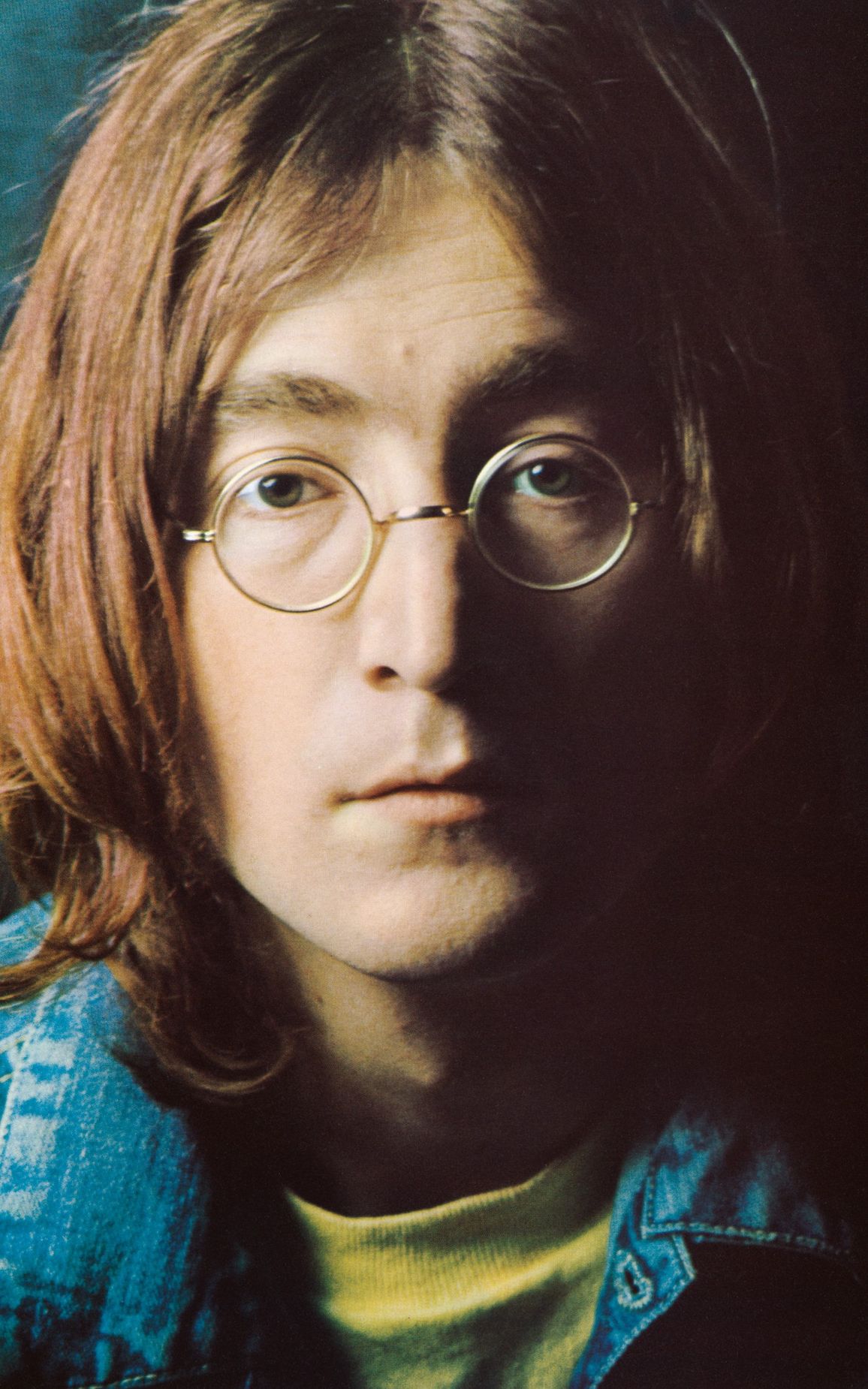 Neither John nor Paul contest to the fact that this was a full Lennon composition without any help from McCartney, although John did exclaim "Not me!" when asked of its authorship in 1980 because of his embarrassment with the song. Its writing was completed by May 28th, 1968, evidence of which is heard in the demo recording John made on that day. Neither John nor Paul contest to the fact that this was a full Lennon composition without any help from McCartney, although John did exclaim "Not me!" when asked of its authorship in 1980 because of his embarrassment with the song. Its writing was completed by May 28th, 1968, evidence of which is heard in the demo recording John made on that day.
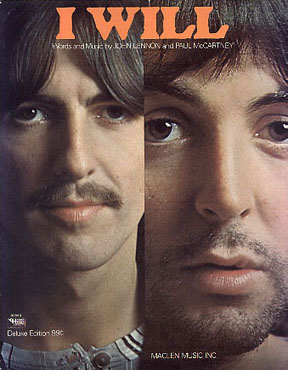 We must note here, however, that a later section of the song as it appears on the “White Album” is a snippet of a tune that Paul wrote on the spot during the recording of his song “I Will,” on September 16th, 1968. This recording, referred to by many as “Can You Take Me Back,” was actually written by Paul and can thereby lend credence to those who consider “Cry Baby Cry” a legitimate Lennon / McCartney collaboration. We must note here, however, that a later section of the song as it appears on the “White Album” is a snippet of a tune that Paul wrote on the spot during the recording of his song “I Will,” on September 16th, 1968. This recording, referred to by many as “Can You Take Me Back,” was actually written by Paul and can thereby lend credence to those who consider “Cry Baby Cry” a legitimate Lennon / McCartney collaboration.
Recording History
On May 28th, 1968, The Beatles gathered at George's 'Kinfauns' house in Esher, Surrey, to record demo versions of songs that they had recently written in preparation for recording their next album. As was usually the case when starting any kind of recording project, John would go first. He recorded a number of new songs in a row on that day onto George's Ampex four-track machine, the first of which was "Cry Baby Cry," indicating he was especially proud of this song at the time.
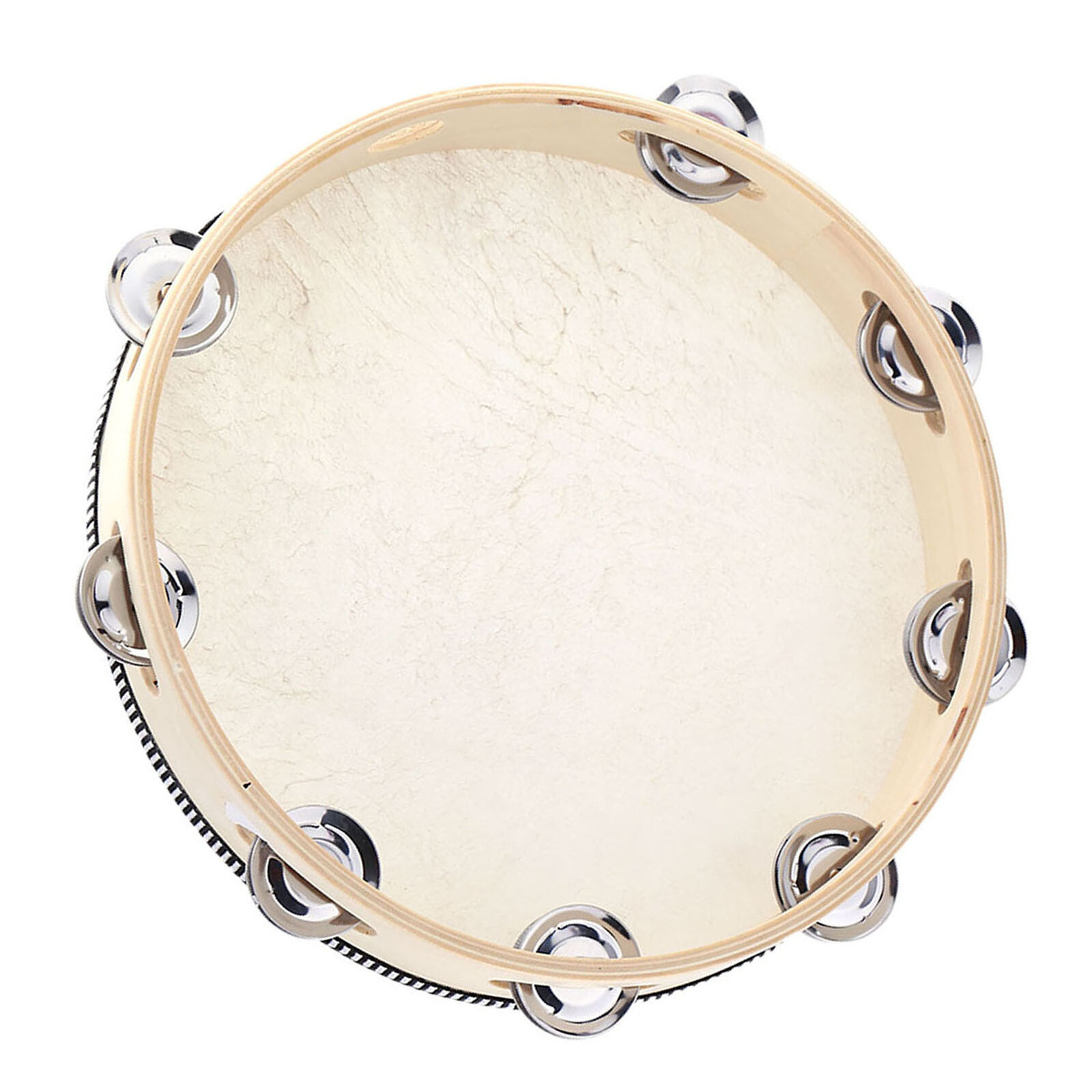 John confidently plays acoustic guitar and sings on this demo recording and then goes to the effort of double-tracking his vocals. This is basically a solo performance by John alone with one of the other Beatles shaking a tambourine lightly at times. All the correct lyrics and chords are in place at this point but there are some variations to the arrangement. For instance, there is no opening chorus as in the finished version, the first verse being the first thing heard. And for the final chorus, John plays it once through in the usual 4/4 time signature and then changes it to 3/4 waltz time to repeat the chorus three more times while omitting the final measure. He then starts to perform the chorus a fifth time but only makes it about half way through until it falls apart, apparently assuming it will have faded out by that time when the song would be officially recorded. John confidently plays acoustic guitar and sings on this demo recording and then goes to the effort of double-tracking his vocals. This is basically a solo performance by John alone with one of the other Beatles shaking a tambourine lightly at times. All the correct lyrics and chords are in place at this point but there are some variations to the arrangement. For instance, there is no opening chorus as in the finished version, the first verse being the first thing heard. And for the final chorus, John plays it once through in the usual 4/4 time signature and then changes it to 3/4 waltz time to repeat the chorus three more times while omitting the final measure. He then starts to perform the chorus a fifth time but only makes it about half way through until it falls apart, apparently assuming it will have faded out by that time when the song would be officially recorded.
 Two days later, on May 30th, 1968, The Beatles entered EMI Studio Two officially start recording what eventually became the “White Album.” It wasn't until July 15th, 1968, however, that they brought “Cry Baby Cry” into EMI Studio Two for the first time. Between these two dates, however, it is reported by some that tensions mounted and tempers flared between the group members, resulting in a far-from-friendly atmosphere. Two days later, on May 30th, 1968, The Beatles entered EMI Studio Two officially start recording what eventually became the “White Album.” It wasn't until July 15th, 1968, however, that they brought “Cry Baby Cry” into EMI Studio Two for the first time. Between these two dates, however, it is reported by some that tensions mounted and tempers flared between the group members, resulting in a far-from-friendly atmosphere.
 Engineer Geoff Emerick, in the book “The Beatles Recording Sessions,” explains the events of an early recording session on this day: “I lost interest in the 'White Album' because they were really arguing amongst themselves and swearing at each other. The expletives were really flying. There was one instance just before I left when they were doing 'Ob-La-Di, Ob-La-Da' for the umpteenth time. Paul was re-recording the vocal again and George Martin made some remark about how he should be lilting onto the half-beat or whatever and Paul, in no refined way, said something to the effect of 'Well you come down and sing it.'” Engineer Geoff Emerick, in the book “The Beatles Recording Sessions,” explains the events of an early recording session on this day: “I lost interest in the 'White Album' because they were really arguing amongst themselves and swearing at each other. The expletives were really flying. There was one instance just before I left when they were doing 'Ob-La-Di, Ob-La-Da' for the umpteenth time. Paul was re-recording the vocal again and George Martin made some remark about how he should be lilting onto the half-beat or whatever and Paul, in no refined way, said something to the effect of 'Well you come down and sing it.'”
 In his book “Here, There And Everywhere,” Emerick continues the story. “Somehow I saw the session through to its ragged conclusion. Paul seemed to calm down a bit, though little else got accomplished that night other than a few run-throughs of John's new song 'Cry Baby Cry.' Distracted and distressed, I couldn't give it my full attention, though: the only thought that kept going through my head was, 'I wonder if I'll ever get to finish this song.'” This evening session, which ran from 9 pm to 3 am the following morning, comprised the group going through approximately 30 unnumbered takes of the song which were committed to tape but amounted to nothing more that rehearsals. In his book “Here, There And Everywhere,” Emerick continues the story. “Somehow I saw the session through to its ragged conclusion. Paul seemed to calm down a bit, though little else got accomplished that night other than a few run-throughs of John's new song 'Cry Baby Cry.' Distracted and distressed, I couldn't give it my full attention, though: the only thought that kept going through my head was, 'I wonder if I'll ever get to finish this song.'” This evening session, which ran from 9 pm to 3 am the following morning, comprised the group going through approximately 30 unnumbered takes of the song which were committed to tape but amounted to nothing more that rehearsals.
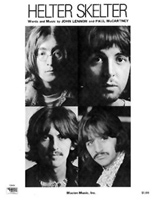 It was common practice at EMI Studios at this time to re-record over tape that was deemed unusable, as was the case with the multiple reels of tape that were filled on this day with rehearsals of "Cry Baby Cry." One of these reels was used to properly record the song on the following day, while another reel was used for recording "Helter Skelter" three days later. It was assummed that all of the "Cry Baby Cry" rehearsals had been wiped clean but, while preparing a new stereo mix for the 50th Anniversary of the "White Album," around 18 minutes of these rehearsals were discovered at the ends of these two spools of four-track tape when the new performances were complete. The instrumentation for these rehearsals was Paul on bass on track one, John on organ and George on electric guitar on track two, Ringo on drums on track three, and John's vocals on track four. It was common practice at EMI Studios at this time to re-record over tape that was deemed unusable, as was the case with the multiple reels of tape that were filled on this day with rehearsals of "Cry Baby Cry." One of these reels was used to properly record the song on the following day, while another reel was used for recording "Helter Skelter" three days later. It was assummed that all of the "Cry Baby Cry" rehearsals had been wiped clean but, while preparing a new stereo mix for the 50th Anniversary of the "White Album," around 18 minutes of these rehearsals were discovered at the ends of these two spools of four-track tape when the new performances were complete. The instrumentation for these rehearsals was Paul on bass on track one, John on organ and George on electric guitar on track two, Ringo on drums on track three, and John's vocals on track four.
 One of these unnumbered rehearsals has been included on the Super Deluxe 50th Anniversary edition of the "White Album," which begins with John rounding up his bandmates for another take. "Uh, start again," he instructs, which he follows up by singing along with Paul's fast paced bass guitar shenanigans the ad lib lines "Semolina semolina pilchard / green snot pie / all mixed together with a dead dog's eye." This, as many Beatles fans may recognize, is a variation of lyrics found in "I Am The Walrus" in combination with the school boy nursery ryhme that those lyrics were originally based on. The tempo that John led his bandmates through for the song was quite slow and, as this rehearsal shows, John was the only one who was finding his way through the song with any fluidity. They obviously had a long way to go. The rehearsal tape also included John's comment, "I declare this organ heavy!," once even laughingly singing "make your mother splime" during one of the takes. His insecurities about the rehearsals were evidenced in his asking the control room staff, "How was it?", while he finally ends the session by saying "Let's have a rest." One of these unnumbered rehearsals has been included on the Super Deluxe 50th Anniversary edition of the "White Album," which begins with John rounding up his bandmates for another take. "Uh, start again," he instructs, which he follows up by singing along with Paul's fast paced bass guitar shenanigans the ad lib lines "Semolina semolina pilchard / green snot pie / all mixed together with a dead dog's eye." This, as many Beatles fans may recognize, is a variation of lyrics found in "I Am The Walrus" in combination with the school boy nursery ryhme that those lyrics were originally based on. The tempo that John led his bandmates through for the song was quite slow and, as this rehearsal shows, John was the only one who was finding his way through the song with any fluidity. They obviously had a long way to go. The rehearsal tape also included John's comment, "I declare this organ heavy!," once even laughingly singing "make your mother splime" during one of the takes. His insecurities about the rehearsals were evidenced in his asking the control room staff, "How was it?", while he finally ends the session by saying "Let's have a rest."
 Geoff Emerick did show up at EMI Studio Two at 4 pm the following day, July 16th, 1968, but not to continue work on “Cry Baby Cry” as The Beatles intended. “The next afternoon, I walked dejectedly into the control room, where both Richard (Lush) and George Martin were sitting quietly,” Geoff Emerick continues. “None of The Beatles had arrived yet: they were late as usual. I took a deep breath and at last the words came out. 'That's it, George,' I announced. 'I've decided I can't take it anymore. I'm leaving.'...'What are you talking about?' he said. 'You can't leave in the middle of an album.' 'I can, George, and I am.'” Geoff was asked by studio manager Alan Stagge to stay on until the end of the week so they could find a replacement, but he insisted on leaving immediately. Geoff Emerick did show up at EMI Studio Two at 4 pm the following day, July 16th, 1968, but not to continue work on “Cry Baby Cry” as The Beatles intended. “The next afternoon, I walked dejectedly into the control room, where both Richard (Lush) and George Martin were sitting quietly,” Geoff Emerick continues. “None of The Beatles had arrived yet: they were late as usual. I took a deep breath and at last the words came out. 'That's it, George,' I announced. 'I've decided I can't take it anymore. I'm leaving.'...'What are you talking about?' he said. 'You can't leave in the middle of an album.' 'I can, George, and I am.'” Geoff was asked by studio manager Alan Stagge to stay on until the end of the week so they could find a replacement, but he insisted on leaving immediately.
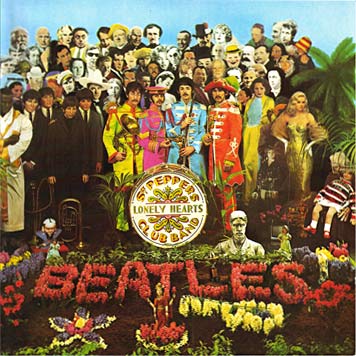 John Lennon's reaction to this news on this day, according to Geoff Emerick, was as follows: “Come on, Geoff, you can't be serious about this...We need you, man, you can't just walk out on us in the middle of an album. I mean, everyone always says what a great record 'Pepper' was, even though I think it's the biggest load of sh*t we've ever done...Anyway, it's nothing you're doing wrong, you know – it's just working in this sh*thole of a place.” John Lennon's reaction to this news on this day, according to Geoff Emerick, was as follows: “Come on, Geoff, you can't be serious about this...We need you, man, you can't just walk out on us in the middle of an album. I mean, everyone always says what a great record 'Pepper' was, even though I think it's the biggest load of sh*t we've ever done...Anyway, it's nothing you're doing wrong, you know – it's just working in this sh*thole of a place.”
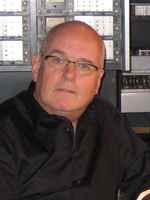 Engineer Richard Lush explains how The Beatles felt about their home studios: “They always had a bee in their bonnet about EMI being very organized and 'establishment.' They thought that we were like that too, and of course George Martin was very suit and tie.” Explaining how the staff would all wear white coats in a very stuffy atmosphere, engineer Martin Benge adds: “They were never really at ease with all that. I think they felt the place could be much more laid-back and relaxed and much less formal, but that's the way Abbey Road was in those days.” Engineer Richard Lush explains how The Beatles felt about their home studios: “They always had a bee in their bonnet about EMI being very organized and 'establishment.' They thought that we were like that too, and of course George Martin was very suit and tie.” Explaining how the staff would all wear white coats in a very stuffy atmosphere, engineer Martin Benge adds: “They were never really at ease with all that. I think they felt the place could be much more laid-back and relaxed and much less formal, but that's the way Abbey Road was in those days.”
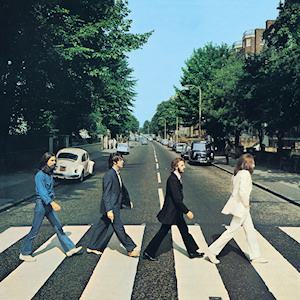 In any event, Geoff Emerick gave up his coveted role as chief engineer for the greatest rock and roll band of all time. He did not work with the group again until April 14th, 1969 for the recording of “The Ballad Of John And Yoko” and then throughout the majority of the “Abbey Road” album. In any event, Geoff Emerick gave up his coveted role as chief engineer for the greatest rock and roll band of all time. He did not work with the group again until April 14th, 1969 for the recording of “The Ballad Of John And Yoko” and then throughout the majority of the “Abbey Road” album.
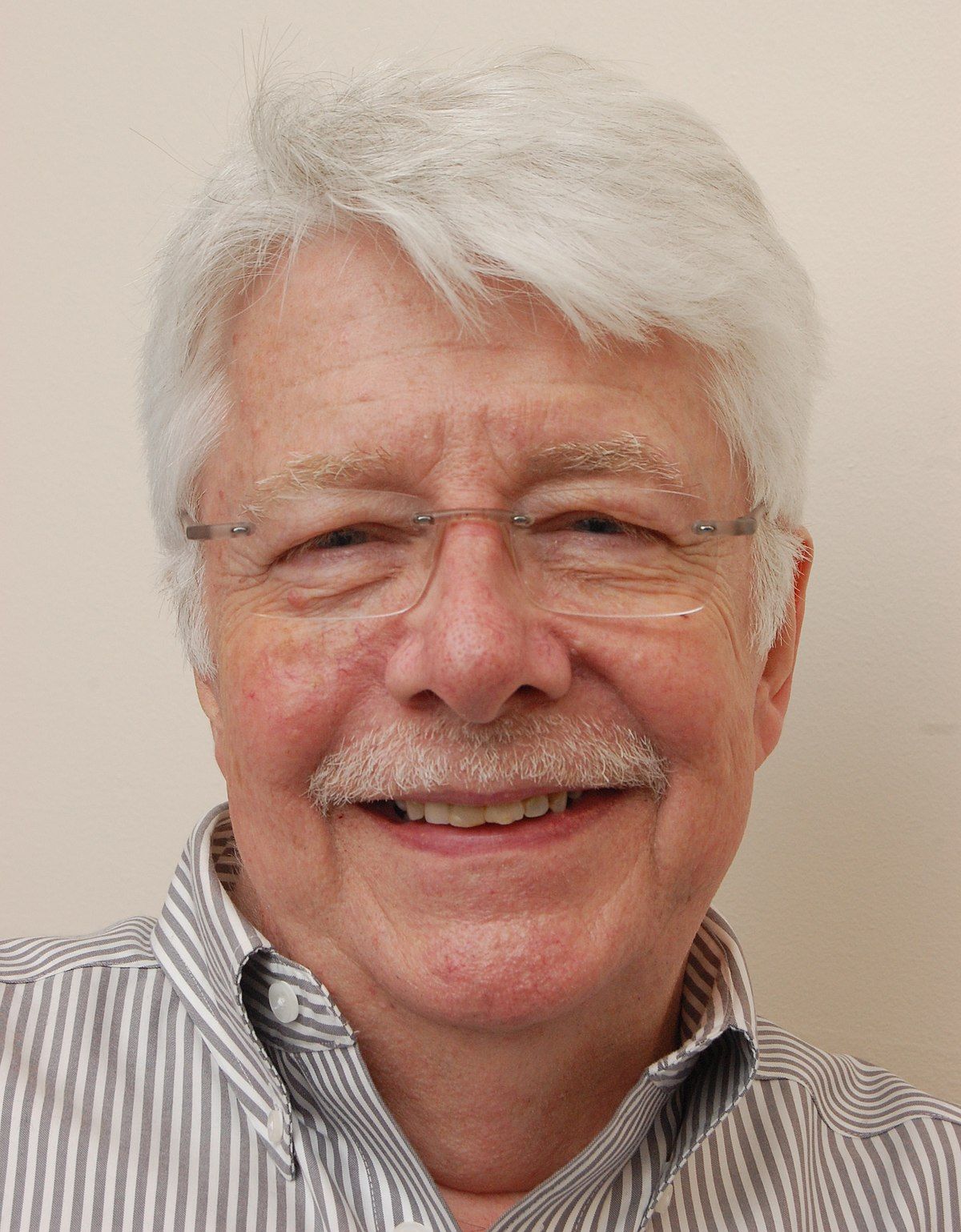 On July 16th, 1968, however, engineer Ken Scott filled in for Geoff Emerick as they continued work on "Cry Baby Cry." In his book "Abbey Road To Ziggy Stardust," Ken Scott relates the events of recording the "White Album" much differently than Geoff Emerick did. "Over the years there has been so much written about the animosity that supposedly pervaded the studio," Ken Scott explains. "It's all been blown way out of proportion. Of course, there was some strife, but there always is during any project, and what The Beatles experienced during the making of the 'White Album' just wasn't that different from what I've experienced on most projects at some time or another." Those who have been priveleged to listen extensively to the reels of tapes that were recorded during this period mostly concur with Ken Scott. On July 16th, 1968, however, engineer Ken Scott filled in for Geoff Emerick as they continued work on "Cry Baby Cry." In his book "Abbey Road To Ziggy Stardust," Ken Scott relates the events of recording the "White Album" much differently than Geoff Emerick did. "Over the years there has been so much written about the animosity that supposedly pervaded the studio," Ken Scott explains. "It's all been blown way out of proportion. Of course, there was some strife, but there always is during any project, and what The Beatles experienced during the making of the 'White Album' just wasn't that different from what I've experienced on most projects at some time or another." Those who have been priveleged to listen extensively to the reels of tapes that were recorded during this period mostly concur with Ken Scott.
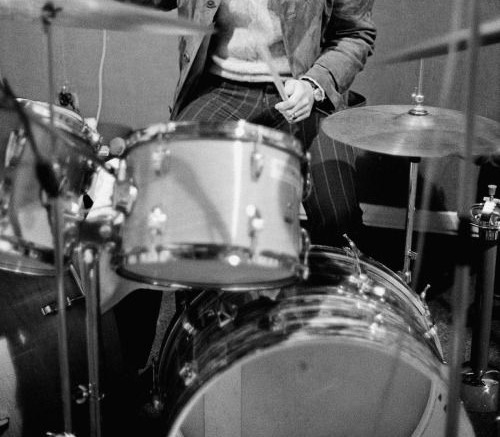 The Beatles got to lay down ten official takes of “Cry Baby Cry” on July 16th, 1968. "Take one," as heard on the 1996 release “Anthology 3,” shows how the arrangement was well worked out by this time with the timpo picked up somewhat, one noticeable difference being a quick acoustic guitar introduction from John. The instrumentation consisted of John on acoustic guitar this time instead of organ, which apparently was deemed too "heavy," Paul on bass, Ringo on drums and John's vocals, each of which undoubtedly filled its own track on the four-track tape. Mark Lewisohn's book "The Beatles Recording Sessions" also stipulates an organ being played on these takes, this no doubt being played by George. The Beatles got to lay down ten official takes of “Cry Baby Cry” on July 16th, 1968. "Take one," as heard on the 1996 release “Anthology 3,” shows how the arrangement was well worked out by this time with the timpo picked up somewhat, one noticeable difference being a quick acoustic guitar introduction from John. The instrumentation consisted of John on acoustic guitar this time instead of organ, which apparently was deemed too "heavy," Paul on bass, Ringo on drums and John's vocals, each of which undoubtedly filled its own track on the four-track tape. Mark Lewisohn's book "The Beatles Recording Sessions" also stipulates an organ being played on these takes, this no doubt being played by George.
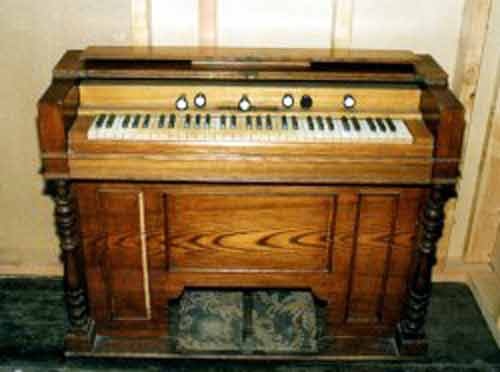 During the opening chorus at the beginning of "take ten," Paul sang a melody line that he thought would be fitting as played by an instrument as a later overdub. After "take ten" was decided to be the best, two attempts at a tape reduction were made to open up more tracks for overdubbing which resulted in "take 12" being the keeper. It appears that all of the rhythm track components were bounced down to tracks one and two of the new four-track tape. This first recording session of the day ended at 9 pm, an hour break then being taken. They all reconvened at 10 pm for a three hour overdub session. Onto track three of the tape was added George Martin on harmonium playing the melody line Paul sang during the introduction, John on piano throughout the song, and tea-party sound effects from Paul, George and Ringo during the third verse where "The Dutches of Kirkcaldy" arrives "late for tea." At 2 am, the session was complete for the day. During the opening chorus at the beginning of "take ten," Paul sang a melody line that he thought would be fitting as played by an instrument as a later overdub. After "take ten" was decided to be the best, two attempts at a tape reduction were made to open up more tracks for overdubbing which resulted in "take 12" being the keeper. It appears that all of the rhythm track components were bounced down to tracks one and two of the new four-track tape. This first recording session of the day ended at 9 pm, an hour break then being taken. They all reconvened at 10 pm for a three hour overdub session. Onto track three of the tape was added George Martin on harmonium playing the melody line Paul sang during the introduction, John on piano throughout the song, and tea-party sound effects from Paul, George and Ringo during the third verse where "The Dutches of Kirkcaldy" arrives "late for tea." At 2 am, the session was complete for the day.
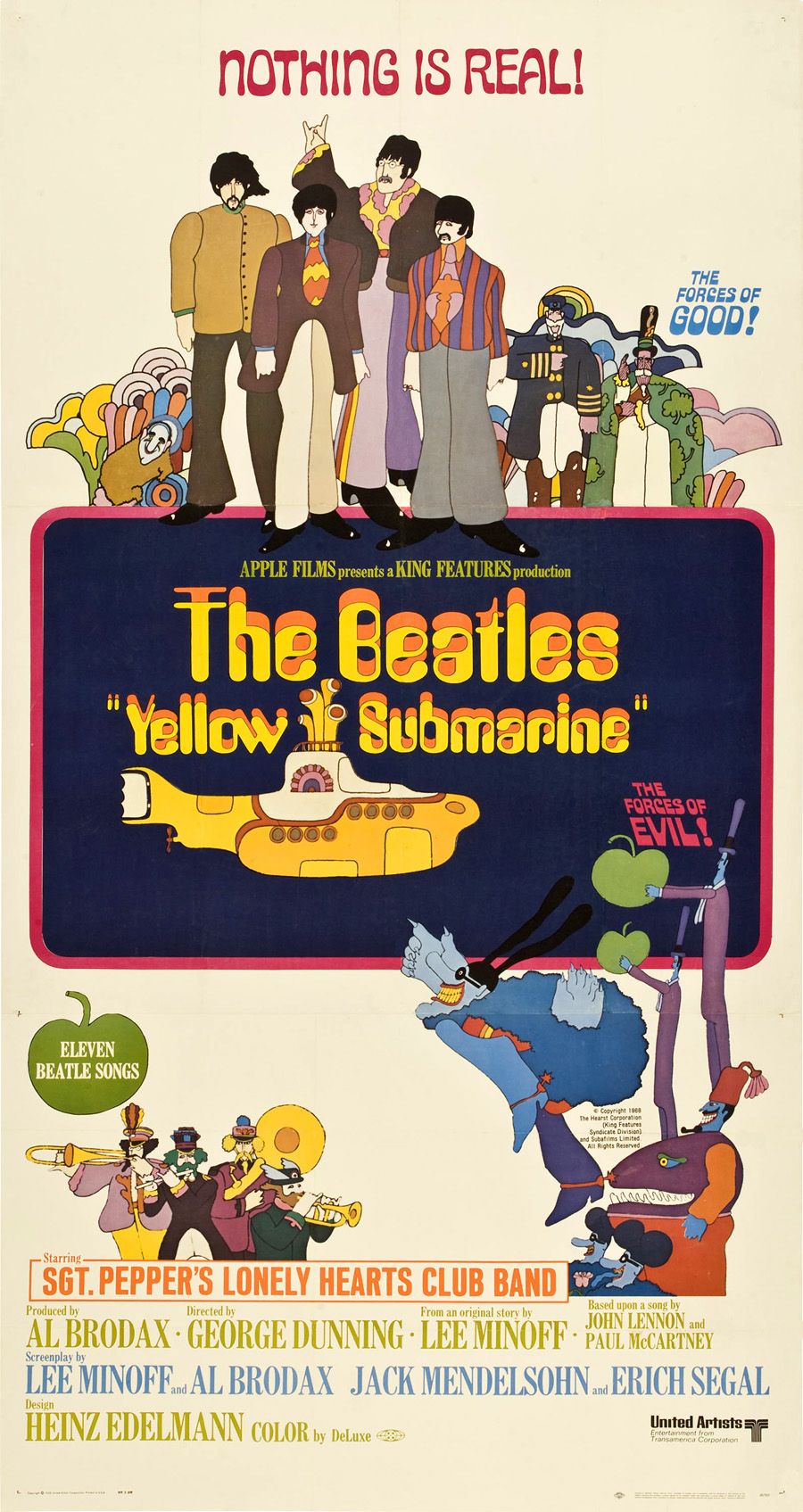 There was no recording session for the next day due to The Beatles attending the world premiere of the animated movie “Yellow Submarine.” However, the day after, July 18th, 1968, they were back in EMI Studio Two at 2:30 pm to continue overdubbing on “Cry Baby Cry.” John double-tracked his lead vocals for some of the song, Paul recorded backing vocals, and George added single strategic lead guitar lines. Another intersting overdub recorded on this day was of John and Paul whistling during the second verse, this sound sometimes being misidentified as high notes being played on an organ. One of them (probably John) held a high E note while they other descended in semitones to C. These overdubs filled all four tracks of the tape once again and, by 9:30 pm, the session was done for the day.. There was no recording session for the next day due to The Beatles attending the world premiere of the animated movie “Yellow Submarine.” However, the day after, July 18th, 1968, they were back in EMI Studio Two at 2:30 pm to continue overdubbing on “Cry Baby Cry.” John double-tracked his lead vocals for some of the song, Paul recorded backing vocals, and George added single strategic lead guitar lines. Another intersting overdub recorded on this day was of John and Paul whistling during the second verse, this sound sometimes being misidentified as high notes being played on an organ. One of them (probably John) held a high E note while they other descended in semitones to C. These overdubs filled all four tracks of the tape once again and, by 9:30 pm, the session was done for the day..
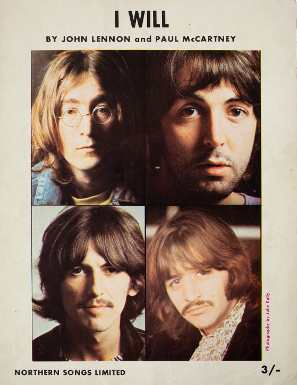 As mentioned above, a small snippet of a tune unofficially titled by many “Can You Take Me Back” was recorded on September 16th, 1968, in EMI Studio Two sometime between 7 pm and midnight. The Beatles (minus George) were in the process of recording Paul's song “I Will” when Paul broke into an unrehearsed off-the-cuff song that contained the repeated lyric “Can you take me back where I came from.” This “song” was designated as "take 19" and lasted 2:21, it then being copied onto one of two “odds and ends” tapes they were keeping for posterity. The instrumentation consisted of Paul on acoustic guitar and vocal, John on maracas and Ringo on bongos. We'll see how this converges with “Cry Baby Cry” a little later. As mentioned above, a small snippet of a tune unofficially titled by many “Can You Take Me Back” was recorded on September 16th, 1968, in EMI Studio Two sometime between 7 pm and midnight. The Beatles (minus George) were in the process of recording Paul's song “I Will” when Paul broke into an unrehearsed off-the-cuff song that contained the repeated lyric “Can you take me back where I came from.” This “song” was designated as "take 19" and lasted 2:21, it then being copied onto one of two “odds and ends” tapes they were keeping for posterity. The instrumentation consisted of Paul on acoustic guitar and vocal, John on maracas and Ringo on bongos. We'll see how this converges with “Cry Baby Cry” a little later.
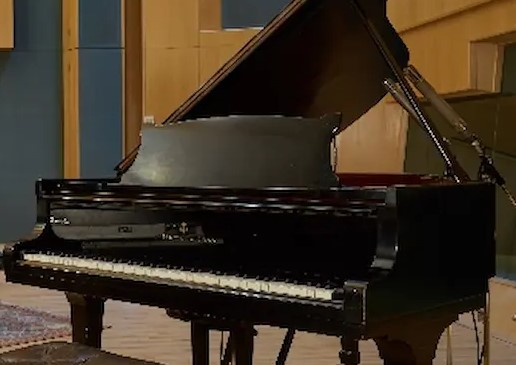 The following day, September 17th, 1968, attention was again given to the original recording of “Cry Baby Cry” from July 18th. EMI Studios had finally incorporated capabilities for eight-track recording, which was a major upgrade from four-track which The Beatles had been using since late 1963. The thought was presented that “Cry Baby Cry” could use more overdubs so a tape copy was made to facilitate eight-track recording on the song. Sometime around 3:30 am during this late night session, this tape copy was made, the four tracks of the previous tape being allocated to tracks five through eight of the eight-track tape, this now being designated as "take 13." Onto track one of this new tape, Paul played descending piano bass notes on a Steinway baby grand "in cavernous echo," as Ken Howlett describes in the "White Album" 50th Anniversary book, with Ringo adding an additional drum track while Paul played tambourine onto track two. This finally brought the recording of "Cry Baby Cry" to completion, this session ending at 5 am the following morning. The following day, September 17th, 1968, attention was again given to the original recording of “Cry Baby Cry” from July 18th. EMI Studios had finally incorporated capabilities for eight-track recording, which was a major upgrade from four-track which The Beatles had been using since late 1963. The thought was presented that “Cry Baby Cry” could use more overdubs so a tape copy was made to facilitate eight-track recording on the song. Sometime around 3:30 am during this late night session, this tape copy was made, the four tracks of the previous tape being allocated to tracks five through eight of the eight-track tape, this now being designated as "take 13." Onto track one of this new tape, Paul played descending piano bass notes on a Steinway baby grand "in cavernous echo," as Ken Howlett describes in the "White Album" 50th Anniversary book, with Ringo adding an additional drum track while Paul played tambourine onto track two. This finally brought the recording of "Cry Baby Cry" to completion, this session ending at 5 am the following morning.
 Both the stereo and mono mixes of the song were done on October 15th, 1968 in the control room of EMI Studio Two by George Martin and engineers Ken Scott and John Smith. John's acoustic guitar was flanged on both the stereo and mono mixes on this day as well. It took five tries to get a suitable stereo mix, the fifth attempt undoubtedly being the best, which panned the vocals predominantly to the left channel during the choruses and centered them in the mix during the verses. Only one remix was needed to get a suitable mono mix on this day. Both the stereo and mono mixes of the song were done on October 15th, 1968 in the control room of EMI Studio Two by George Martin and engineers Ken Scott and John Smith. John's acoustic guitar was flanged on both the stereo and mono mixes on this day as well. It took five tries to get a suitable stereo mix, the fifth attempt undoubtedly being the best, which panned the vocals predominantly to the left channel during the choruses and centered them in the mix during the verses. Only one remix was needed to get a suitable mono mix on this day.
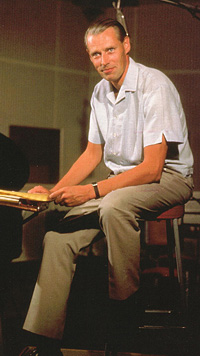 On the next day, October 16th, 1968, John and Paul met at EMI Studios with George Martin, Ken Scott and John Smith for the long process of putting together the running order of the album. This took place in the control rooms of Studios One, Two and Three as well as Rooms 41 and 42, this procedure taking a full 24 hours, from 5 pm until 5 pm the following day (October 17th), making this the longest session The Beatles ever had. "I remember arriving at the studios on Thursday, 17 October, 1968, 9 pm, to find The Beatles still there," engineer Alan Brown recalls. "They had been there all night, finalizing the master tapes for what we now call the 'White Album' and banding it up (putting the songs in order and editing the master). They were all over the place, Room 41, the front listening room, - anywhere - almost every room they could get. It was a frantic last minute job." On the next day, October 16th, 1968, John and Paul met at EMI Studios with George Martin, Ken Scott and John Smith for the long process of putting together the running order of the album. This took place in the control rooms of Studios One, Two and Three as well as Rooms 41 and 42, this procedure taking a full 24 hours, from 5 pm until 5 pm the following day (October 17th), making this the longest session The Beatles ever had. "I remember arriving at the studios on Thursday, 17 October, 1968, 9 pm, to find The Beatles still there," engineer Alan Brown recalls. "They had been there all night, finalizing the master tapes for what we now call the 'White Album' and banding it up (putting the songs in order and editing the master). They were all over the place, Room 41, the front listening room, - anywhere - almost every room they could get. It was a frantic last minute job."
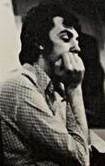 It was on this day that a 28 second portion of the "Can You Take Me Back" song snippet recorded on September 16th, 1968 was edited onto the end of "Cry Baby Cry" on both the stereo and mono mixes. They apparently felt that a direct segue from "Cry Baby Cry" into "Revolution 9" wouldn't work well on its own, so this insertion was implemented to create a suitably "creepy" link-piece between the two tracks. "Can You Take Me Back" is a sudden shift to an "adult" viewpoint which serves to wake us gently from the dream state imposed by "Cry Baby Cry," its implied sentiment of 'You Can't Go Home Again' bringing a suitable conclusion to the lyrical theme of unfulfilled desires that winds throughout the songs on the fourth side of the "White Album." It was on this day that a 28 second portion of the "Can You Take Me Back" song snippet recorded on September 16th, 1968 was edited onto the end of "Cry Baby Cry" on both the stereo and mono mixes. They apparently felt that a direct segue from "Cry Baby Cry" into "Revolution 9" wouldn't work well on its own, so this insertion was implemented to create a suitably "creepy" link-piece between the two tracks. "Can You Take Me Back" is a sudden shift to an "adult" viewpoint which serves to wake us gently from the dream state imposed by "Cry Baby Cry," its implied sentiment of 'You Can't Go Home Again' bringing a suitable conclusion to the lyrical theme of unfulfilled desires that winds throughout the songs on the fourth side of the "White Album."
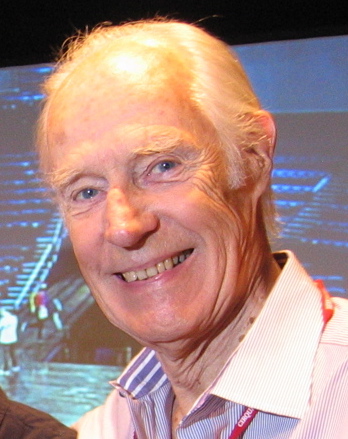 Sometime in 1996, George Martin returned to the master tape of “Cry Baby Cry” to create a releasable version of "take one" of the song for inclusion on the compilation album “Anthology 3.” George also returned to these tapes with his son Giles Martin sometime between 2004 and 2006 to use elements of “Cry Baby Cry” in two tracks from the highly acclaimed album “Love.” George Martin's harmonium as well as other elements were included on the track “Being For The Benefit Of Mr. Kite! / I Want You (She's So Heavy) / Helter Skelter” and the “Can You Take Me Back” segment was used on the track “Come Together / Dear Prudence – Cry Baby Cry (Transition)." Sometime in 1996, George Martin returned to the master tape of “Cry Baby Cry” to create a releasable version of "take one" of the song for inclusion on the compilation album “Anthology 3.” George also returned to these tapes with his son Giles Martin sometime between 2004 and 2006 to use elements of “Cry Baby Cry” in two tracks from the highly acclaimed album “Love.” George Martin's harmonium as well as other elements were included on the track “Being For The Benefit Of Mr. Kite! / I Want You (She's So Heavy) / Helter Skelter” and the “Can You Take Me Back” segment was used on the track “Come Together / Dear Prudence – Cry Baby Cry (Transition)."
 Giles Martin and engineer Sam Okell returned to the master tapes of "Cry Baby Cry" sometime in 2018 once again to create a new stereo mix of the song for inclusion on the various 50th Anniversary editions of the "White Album." Along with it, they created a stereo mix of the Esher demo of the song from May 28th, 1968, a segment of the newly discovered rehearsals the group recorded on July 15th, 1968, and the full "Can You Take Me Back" performance as recorded on September 16th of that year. Giles Martin and engineer Sam Okell returned to the master tapes of "Cry Baby Cry" sometime in 2018 once again to create a new stereo mix of the song for inclusion on the various 50th Anniversary editions of the "White Album." Along with it, they created a stereo mix of the Esher demo of the song from May 28th, 1968, a segment of the newly discovered rehearsals the group recorded on July 15th, 1968, and the full "Can You Take Me Back" performance as recorded on September 16th of that year.
Song Structure and Style
The structure for the main section of "Cry Baby Cry" consists of only two elements repeated back and forth, namely 'chorus/ verse/ chorus/ verse/ chorus/ verse/ chorus/ verse/ chorus/ chorus/ chorus' (or ababababaaa). No instrumental or solo section was deemed necessary by John who decided to just keep his imaginary story-line going nonstop.
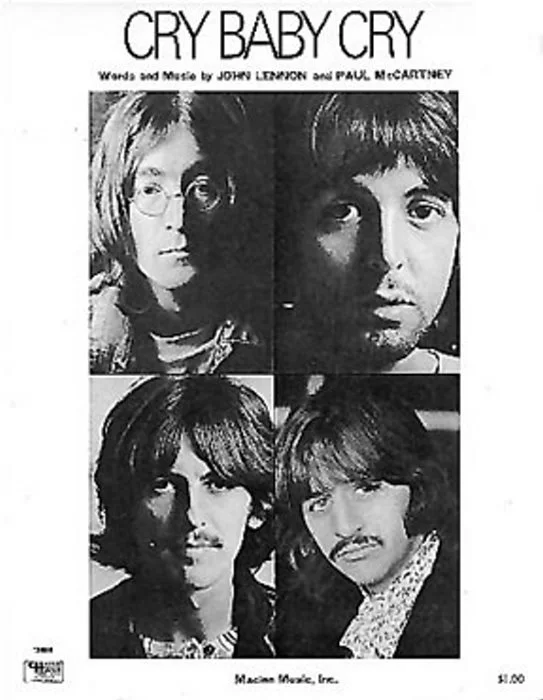 The first chorus begins immediately on the downbeat, John's vocal and flanged acoustic guitar appearing simultaneously, with George Martin's harmonium making its appearance in the fourth through seventh measure. This first chorus is only seven measures long, one measure shorter than most of the choruses in the song. John omits the final lyric “so cry baby cry” as heard in the other choruses to allow for the missing measure. The first chorus begins immediately on the downbeat, John's vocal and flanged acoustic guitar appearing simultaneously, with George Martin's harmonium making its appearance in the fourth through seventh measure. This first chorus is only seven measures long, one measure shorter than most of the choruses in the song. John omits the final lyric “so cry baby cry” as heard in the other choruses to allow for the missing measure.
The first verse then appears which is eleven measures long, this actually consisting of two sections that are six measures each, the last measure of the second section lopped off as extraneous because of the second chorus that follows. The first two measures only contain John on vocal and acoustic guitar, this changing in the third verse as Ringo first arrives in the song with snare drum tapping. The fourth measure brings in Paul on bass, playing a throbbing rhythm which begins quietly and then swells in volume until it descends again and disappears by the end of the sixth measure. Paul's piano overdub appears first in the fifth measure and then continues throughout the rest of the verse, playing descending bass notes in measures seven through ten and then a silly fumbling figure after the lyric mentions the Queen “playing piano.” Paul's bass repeats the throbbing rhythm during the tenth and eleventh measures.
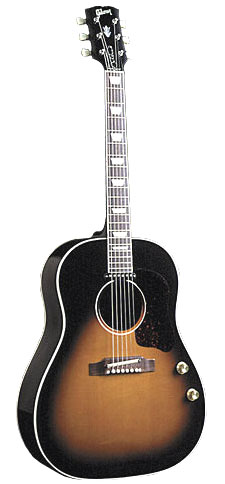 The second chorus is next, which is now a full eight measures in length. John's vocals are now double-tracked and with a good amount of ADT (“Artificial Double Tracking”) to give it a fuller sound. John plays piano throughout this chorus while Ringo plods heavily with a snare and kick drum beat along with Paul's tambourine overdub. John is still on acoustic guitar while Paul kicks in on bass, Ringo adding a nice drum fill in the final measure. The second chorus is next, which is now a full eight measures in length. John's vocals are now double-tracked and with a good amount of ADT (“Artificial Double Tracking”) to give it a fuller sound. John plays piano throughout this chorus while Ringo plods heavily with a snare and kick drum beat along with Paul's tambourine overdub. John is still on acoustic guitar while Paul kicks in on bass, Ringo adding a nice drum fill in the final measure.
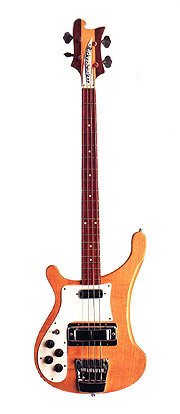 The second verse, which is eleven measures long as are all the rest, has full instrumentation this time around. This consists of John on piano and vocals (no acoustic guitar this time), Paul on bass playing a more regular pattern, John and Paul whistling, and Ringo playing a rhythmic drum beat with interesting hi hat accents. Ringo performs a drum fill in the fourth measure and then a cymbal crash midway through the fifth measure to create a climactic moment, reprising this in the tenth and eleventh measures. The second verse, which is eleven measures long as are all the rest, has full instrumentation this time around. This consists of John on piano and vocals (no acoustic guitar this time), Paul on bass playing a more regular pattern, John and Paul whistling, and Ringo playing a rhythmic drum beat with interesting hi hat accents. Ringo performs a drum fill in the fourth measure and then a cymbal crash midway through the fifth measure to create a climactic moment, reprising this in the tenth and eleventh measures.
This is followed by another chorus which is nearly identical to the previous one instrumentally. Noticeable differences are Paul's backing vocals in the seventh and eighth measures on the words “cry baby cry” and Ringo not performing a drum fill in the final measure this time around.
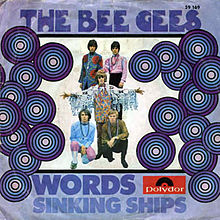 The third verse is next, which is a little more subdued in volume to allow for the 'tea party' sound effects the group recorded to coincide with the “Dutchess” arriving “late for tea,” these effects heard mostly in measures one through four. The instrumentation is similar to the previous verse but with certain differences, one being the omission of John and Paul's high whistling which is replaced with two lead guitar passages by George in measures five and six and then measure eleven. This is followed by yet another chorus, Paul now beginning his harmony in the fifth measure with the lyric “she's old enough to know better.” John here begins to add a noticeable vibrato to his voice, detected mostly in the word “sigh-igh-igh-igh,” such as heard in The Bee Gees' song “Words” which was a recent British Top Ten hit at that time, as well as their friend Donovan's hushed vibrato-filled vocal on his recent hit "Hurdy Gurdy Man." Ringo once again decides not to perform a drum fill in the final measure. The third verse is next, which is a little more subdued in volume to allow for the 'tea party' sound effects the group recorded to coincide with the “Dutchess” arriving “late for tea,” these effects heard mostly in measures one through four. The instrumentation is similar to the previous verse but with certain differences, one being the omission of John and Paul's high whistling which is replaced with two lead guitar passages by George in measures five and six and then measure eleven. This is followed by yet another chorus, Paul now beginning his harmony in the fifth measure with the lyric “she's old enough to know better.” John here begins to add a noticeable vibrato to his voice, detected mostly in the word “sigh-igh-igh-igh,” such as heard in The Bee Gees' song “Words” which was a recent British Top Ten hit at that time, as well as their friend Donovan's hushed vibrato-filled vocal on his recent hit "Hurdy Gurdy Man." Ringo once again decides not to perform a drum fill in the final measure.
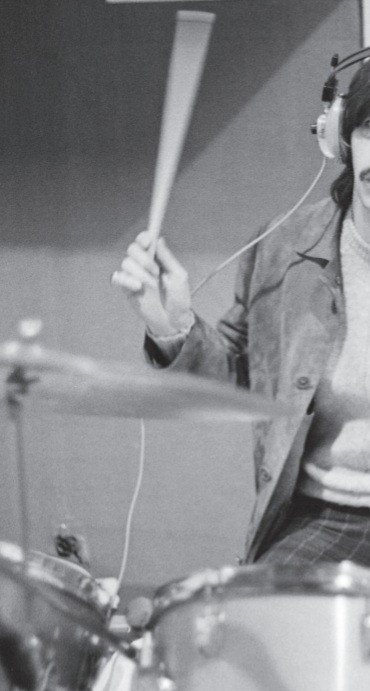 The fourth and final verse is also mostly subdued, Ringo only hitting the ride cymbal on half notes during measures one through three and then eighth notes in measures seven through nine. He performs his usual drum fills and cymbal crashes in the usual places from the previous two verses. While Ringo is on the ride cymbal, the only other instrumentation is Paul's bass guitar and his descending bass piano notes. Interestingly, Paul performs a thumb roll on the piano during Ringo's drum fill in the tenth measure, adding to the swell in volume at that point. The fourth and final verse is also mostly subdued, Ringo only hitting the ride cymbal on half notes during measures one through three and then eighth notes in measures seven through nine. He performs his usual drum fills and cymbal crashes in the usual places from the previous two verses. While Ringo is on the ride cymbal, the only other instrumentation is Paul's bass guitar and his descending bass piano notes. Interestingly, Paul performs a thumb roll on the piano during Ringo's drum fill in the tenth measure, adding to the swell in volume at that point.
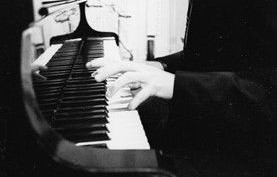 Next comes a three-times repeated chorus, the first two being seven measures long and the third being the standard eight measures in length. The instrumentation here is John on vocals (still singing with vibrato) acoustic guitar and piano, Paul on bass and harmony vocals and Ringo on drums and tambourine. Interestingly, Ringo performs a drum fill at the end of where the eighth measure would be in the first two of these choruses, giving the illusion of there being eight measures when in fact it's in the first measure of the next chorus where he performs these drum fills. The third chorus ends suddenly on the eighth measure with all instruments ringing out on a minor chord, followed by a bum note by John on piano. Next comes a three-times repeated chorus, the first two being seven measures long and the third being the standard eight measures in length. The instrumentation here is John on vocals (still singing with vibrato) acoustic guitar and piano, Paul on bass and harmony vocals and Ringo on drums and tambourine. Interestingly, Ringo performs a drum fill at the end of where the eighth measure would be in the first two of these choruses, giving the illusion of there being eight measures when in fact it's in the first measure of the next chorus where he performs these drum fills. The third chorus ends suddenly on the eighth measure with all instruments ringing out on a minor chord, followed by a bum note by John on piano.
 This is then followed by an eighteen-measure rambling “can you take me back” verse which consists of Paul on acoustic guitar playing a quarter note pattern and vocals, John on maracas played on the quarter-note beats, and Ringo on bongos playing on the half-note beats. This section works nicely here especially because the beat coincidentally is the same as the body of the song we just heard. It also creates a creepy atmosphere that leads perfectly into the cacophony of sound that follows it on the album. This is then followed by an eighteen-measure rambling “can you take me back” verse which consists of Paul on acoustic guitar playing a quarter note pattern and vocals, John on maracas played on the quarter-note beats, and Ringo on bongos playing on the half-note beats. This section works nicely here especially because the beat coincidentally is the same as the body of the song we just heard. It also creates a creepy atmosphere that leads perfectly into the cacophony of sound that follows it on the album.
American Releases
"Cry Baby Cry" ended up as the fourth track of side four on their double album "The Beatles," popularly known as the "White Album," which was released in the U.S. on November 25th, 1968. It was released on compact disc for the first time on August 24th, 1987, then was re-released as a 30th Anniversary limited edition CD on November 23rd, 1998, then as a remastered CD on September 9th, 2009. Its original vinyl release in 1968 was only in stereo since mono albums were practically phased out in the US by that time. However, the vinyl album did finally get an individual mono vinyl album release in America on September 9th, 2014, followed by a stereo remix vinyl release on November 9th, 2018 for its 50th Anniversary.
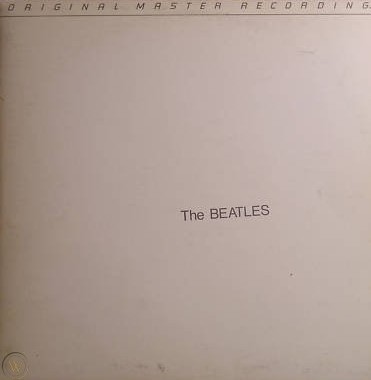 An interesting US vinyl edition of the “White Album” was released on January 7th, 1982, this being manufactured by Mobile Fidelity Sound Lab in Chatsworth, California as part of their "Original Master Recording" series. Their practice was to prepare a new master utilizing half-speed mastering technology from the original master tapes, in this case using the leased sub-master from Capitol Records. This release, which sounded superior to to all previous British and American pressings, was packaged in a non-embossed unnumbered cover that did not include the usual poster/lyric sheet or individual Beatles portraits as contained in standard releases. Nonetheless, this excellent edition of the album was only available for a short time and is quite collectible today. An interesting US vinyl edition of the “White Album” was released on January 7th, 1982, this being manufactured by Mobile Fidelity Sound Lab in Chatsworth, California as part of their "Original Master Recording" series. Their practice was to prepare a new master utilizing half-speed mastering technology from the original master tapes, in this case using the leased sub-master from Capitol Records. This release, which sounded superior to to all previous British and American pressings, was packaged in a non-embossed unnumbered cover that did not include the usual poster/lyric sheet or individual Beatles portraits as contained in standard releases. Nonetheless, this excellent edition of the album was only available for a short time and is quite collectible today.
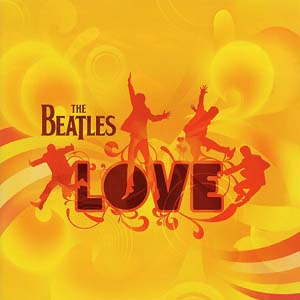 On October 28th, 1996, the excellent 'take one' of the song as recorded on July 16th, 1968, was contained on the compilation album “Anthology 3.” Then, as detailed above, segments of the song were featured on two different tracks of the Grammy Award winning album “Love,” this being released on November 20th, 2006. On October 28th, 1996, the excellent 'take one' of the song as recorded on July 16th, 1968, was contained on the compilation album “Anthology 3.” Then, as detailed above, segments of the song were featured on two different tracks of the Grammy Award winning album “Love,” this being released on November 20th, 2006.
The entire mono Beatles catalog was first released on September 9th, 2009 in the CD box set entitled “The Beatles In Mono,” which included the first official US release of the mono “White Album,” “Cry Baby Cry” being included therein. The vinyl edition of this box set was first released on September 9th, 2014.
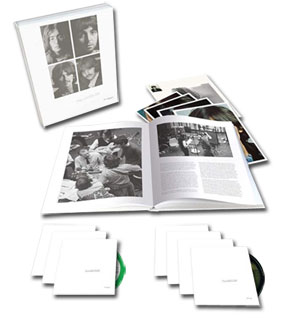 Various editions of the "White Album" were released on November 9th, 2018 to commemorate the 50th Anniversary of its original release. The "Deluxe" edition, which was made available in a 3CD set and a limited edition 180-gram 4LP vinyl set, contained the newly created Giles Martin mix of the "White Album" as well as the complete set of Esher demos that The Beatles recorded in late May of 1968. The "Super Deluxe" 6CD + 1Blu-ray edition also contains a segment of the newly discovered rehearsal of "Cry Baby Cry" from July 15th, 1968 and the complete "Can You Take Me Back" outro as recorded on September 16th, 1968. Various editions of the "White Album" were released on November 9th, 2018 to commemorate the 50th Anniversary of its original release. The "Deluxe" edition, which was made available in a 3CD set and a limited edition 180-gram 4LP vinyl set, contained the newly created Giles Martin mix of the "White Album" as well as the complete set of Esher demos that The Beatles recorded in late May of 1968. The "Super Deluxe" 6CD + 1Blu-ray edition also contains a segment of the newly discovered rehearsal of "Cry Baby Cry" from July 15th, 1968 and the complete "Can You Take Me Back" outro as recorded on September 16th, 1968.
Live Performances
It's unfortunate that The Beatles never performed the song live since the writing of this song occurred well past their touring days. No solo Beatle ever thought to dust this one off for the stage either.
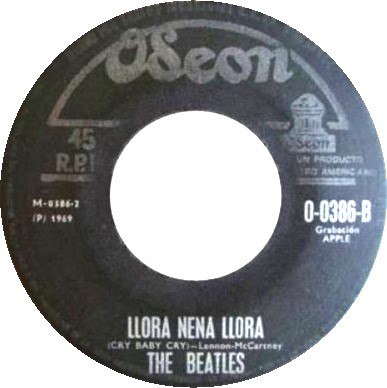
"Cry Baby Cry" single, Nicaragua
Conclusion
John Lennon was known for being dissatisfied with how his compositions turned out in the recording studio. As a songwriter, he would visualize in his mind how his song would be heard, most times trying hard to convey to George Martin and the other Beatles how he wanted it to sound. When interviewed, he had been very vocal about his dissatisfaction with the released recordings of some of his compositions, downplaying songs such as "Run For Your Life," "Help!," "Tomorrow Never Knows" and "Across The Universe" among others, baffling fans who view these as masterpieces.
.png) "Cry Baby Cry” appears to be a prime example of this. He felt strongly about it when he recorded the demo of the song, this being the first one out of eleven that he recorded on that day. He introduced the song in the recording studio relatively early on within the four-and-a-half months they needed to record the album. And after they had completed the song, they had it transferred from four-track to eight-track for even more work, even though only minimal overdubs were recorded before they deemed it suitable for release. In the end, John apparently was once again unhappy with how one of his songs turned out, as evidenced by his negative expressions concerning the song when asked in interviews. When it came to sequencing the album, John ended up relegated "Cry Baby Cry" to the middle of side four where it could easily be overlooked. "Cry Baby Cry” appears to be a prime example of this. He felt strongly about it when he recorded the demo of the song, this being the first one out of eleven that he recorded on that day. He introduced the song in the recording studio relatively early on within the four-and-a-half months they needed to record the album. And after they had completed the song, they had it transferred from four-track to eight-track for even more work, even though only minimal overdubs were recorded before they deemed it suitable for release. In the end, John apparently was once again unhappy with how one of his songs turned out, as evidenced by his negative expressions concerning the song when asked in interviews. When it came to sequencing the album, John ended up relegated "Cry Baby Cry" to the middle of side four where it could easily be overlooked.
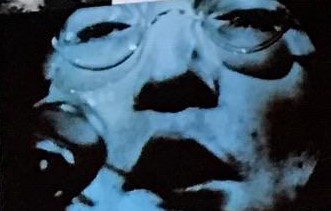 John ended up getting his wish – it was overlooked by most listeners who were captivated by a vast array of musical styles throughout the first three sides of this incredible album. What John probably didn't take into consideration, however, was that the appreciation for the music of The Beatles would live on decade after decade after decade, with individuals like you and I pouring through and dissecting every aspect of their music and discovering the genius of their recordings in every nook and cranny of their catalog. We can all now appreciate that “Cry Baby Cry” is a real jewel, one that should be discovered and appreciated by all! John ended up getting his wish – it was overlooked by most listeners who were captivated by a vast array of musical styles throughout the first three sides of this incredible album. What John probably didn't take into consideration, however, was that the appreciation for the music of The Beatles would live on decade after decade after decade, with individuals like you and I pouring through and dissecting every aspect of their music and discovering the genius of their recordings in every nook and cranny of their catalog. We can all now appreciate that “Cry Baby Cry” is a real jewel, one that should be discovered and appreciated by all!
Song Summary
“Cry Baby Cry”
Written by: John Lennon / Paul McCartney
- Song Written: Late 1967 to May 28, 1968 (and September 16, 1968)
- Song Recorded: July 16 and 18, 1968 (and September 16, 1968)
- First US Release Date: November 25, 1968
- First US Album Release: Apple #SWBO-101 “The Beatles”
- US Single Release: n/a
- Highest Chart Position: n/a
- British Album Release: Apple #PCS 7067-7068 “The Beatles”
- Length: 3:11
- Key: G major (F major)
- Producer: George Martin (Chris Thomas)
- Engineers: Ken Scott, Richard Lush (Ken Scott, Mike Sheady)
Instrumentation (most likely):
- John Lennon - Lead Vocals, Rhythm Guitar (1964 Gibson J-160E), Piano (Hamburg Steinway Baby Grand), whistling, maracas (during outro)
- Paul McCartney - Bass (1964 Rickenbacker 4001 S), Piano (Hamburg Steinway Baby Grand), backing vocals, tea party sound effects, whistling, tambourine, Lead Vocals (during outro), Acoustic Guitar (during outro) (1967 Martin D-28)
- George Harrison - Lead Guitar (1961 Sonic Blue Fender Stratocaster), Organ (Hammond L-100), tea party sound effects
- Ringo Starr - Drums (1964 Ludwig Super Classic Black Oyster Pearl), tea party sound effects, bongos (during outro)
- George Martin - Harmonium (Mannborg)
Written and compiled by Dave Rybaczewski
|
IF YOU WOULD LIKE TO MAKE A DONATION TO KEEP THIS WEBSITE UP AND RUNNING, PLEASE CLICK BELOW!
Sign Up Below for our MONTHLY BEATLES TRIVIA QUIZ!
|